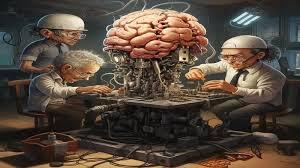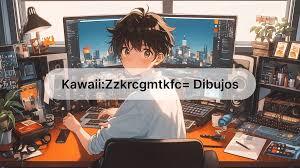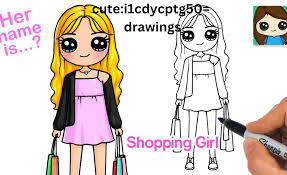The Brain Behind the Art: Understanding the Neuroscience of clipart:ee-zgj_h1oc= brain

Introduction to clipart:ee-zgj_h1oc= brain
Art has a way of sparking our imagination and evoking emotions. But have you ever wondered what happens in your brain when you encounter clipart? The images seem simple, yet they hold the power to communicate complex ideas and feelings instantly. This blog post dives into the fascinating intersection of neuroscience and visual art, exploring how our brains interpret these seemingly straightforward designs.
By unlocking the secrets behind visual perception, we can better understand why certain clipart resonates with us while others fade into the background. Whether you’re an educator looking for effective teaching tools or just someone curious about how visuals affect our cognition, join us as we unravel “The Brain Behind the Art: Understanding the Neuroscience of clipart:ee-zgj_h1oc= brain.” It’s time to discover how those little images shape our thoughts and memories!
The Science Behind Visual Perception
Visual perception is a fascinating process that begins when light enters our eyes. The retina captures images and converts them into electrical signals, which the brain interprets.
Our brains are wired to recognize patterns quickly. This inherent ability allows us to identify shapes, colors, and movements almost instantly. It’s as if we have an internal shortcut for making sense of what we see.
Attention plays a critical role in how we perceive art and clipart alike. Elements like color contrast or symmetry can draw our focus, guiding our emotional responses.
Moreover, context matters significantly. Our memories and experiences influence how we interpret visual stimuli. A simple clipart image might evoke joy or nostalgia depending on personal associations.
Understanding these principles not only sheds light on human cognition but also enhances the creation of engaging visuals across various mediums.
How the Brain Interprets Clipart Images
The brain’s interpretation of clipart images is a fascinating process. When we see a simple graphic, our brains quickly analyze its shapes and colors. This happens almost instantaneously.
Visual information travels from the eyes to the occipital lobe, where basic features are processed. From there, it moves into other areas for deeper understanding. The brain identifies familiar patterns or concepts associated with those visuals.
For instance, a smiling face evokes feelings of happiness due to past experiences linked to similar imagery. Our neural pathways play a crucial role in this recognition process.
Cognitive functions like memory also influence how we interpret these graphics. If someone has positive associations with certain symbols or icons, they’ll likely react more favorably when seeing them again.
Thus, every clipart image triggers unique emotional responses shaped by individual backgrounds and shared cultural meanings.
The Impact of Clipart on Memory and Emotions
Clipart has a fascinating ability to evoke memories and emotions. When we see familiar images, they can trigger vivid recollections from our past. A simple cartoon character or a vibrant icon might transport us back to childhood moments.
This emotional connection is rooted in how our brains process visuals. Images often carry more weight than text alone, creating stronger associations with experiences and feelings. Clipart elements, especially those linked to personal stories, can stir nostalgia or joy.
Moreover, clipart’s playful nature appeals to our emotional side. Bright colors and whimsical designs spark happiness and creativity. This makes it an effective tool for communication in educational settings where engagement is crucial.
Interestingly, the impact of clipart goes beyond mere aesthetics; it enhances retention of information by making learning more enjoyable. The combination of visual stimulation and emotional resonance helps solidify concepts in our memory banks.
Advantages of Using Clipart in Education and Communication
Clipart serves as a powerful tool in education. It enhances visual learning, catering to diverse student needs. Bright colors and engaging shapes grab attention, making information more digestible.
In communication, clipart simplifies complex ideas. Visuals can break down barriers of language or literacy. A well-placed image often says more than words alone.
Moreover, using clipart fosters creativity among students. They can create their own visuals for projects, allowing self-expression while enhancing understanding. This hands-on approach makes learning interactive and enjoyable.
Additionally, incorporating clipart into lessons supports retention of information. Studies show that visuals aid memory recall significantly compared to text-heavy materials alone.
Teachers and communicators alike benefit from the versatility of clipart. Whether it’s in presentations or worksheets, these images add clarity and interest to content across various subjects.
Potential Drawbacks and Controversies Surrounding clipart:ee-zgj_h1oc= brain
While clipart serves as a valuable tool, it is not without its drawbacks. One significant concern lies in the oversimplification of complex ideas. Clipart can reduce intricate concepts to mere visuals, potentially leading to misunderstandings.
Moreover, the use of generic images may result in a lack of originality. This can dilute creativity and fail to engage audiences who crave unique content that resonates with them on a deeper level.
Another controversy revolves around copyright issues. Many clipart images are free or low-cost, yet using them improperly can lead to legal repercussions for businesses and educators alike.
There’s an ongoing debate about cultural sensitivity. Some clipart may inadvertently perpetuate stereotypes or misrepresent certain groups, highlighting the need for careful selection when incorporating these visuals into communications.
Future Developments in Neuroscience and Clipart Usage
The intersection of neuroscience and clipart is an exciting frontier. As technology advances, we can expect innovative tools that enhance how we create and perceive visual art.
Imagine AI algorithms that analyze brain activity in real time, tailoring clipart suggestions based on emotional responses. This could lead to more personalized content creation, allowing users to connect with their audience at deeper levels.
Moreover, virtual reality (VR) might play a significant role. By immersing individuals in 3D environments filled with dynamic clipart elements, the experience could evoke strong emotions and facilitate learning like never before.
Research into neuroplasticity might also yield insights into how repeated exposure to specific types of clipart influences brain structure over time. Such findings could revolutionize educational strategies or therapeutic practices using visual imagery for mental health support.
These potential developments promise a vibrant future where understanding the brain enhances our artistic expression through clipart.
Conclusion: The Role of the Brain in Creating and Interpreting Art
The interplay between the clipart:ee-zgj_h1oc= brain and art is a captivating journey. Understanding how our brains process clipart reveals much about human cognition. It highlights the intricate dance of neurons that allows us to interpret visual stimuli.
As we engage with clipart, our minds draw connections, evoking memories and emotions tied to what we see. This ability impacts learning experiences, making information more memorable and relatable.
While there are benefits associated with using clipart in education and communication, potential drawbacks exist as well. It’s essential to balance creativity with clarity to ensure effective messaging without oversimplification or misrepresentation.
Looking ahead, advancements in neuroscience promise exciting developments in how we understand visual perception further. As technology evolves, so too will our methods for creating and interpreting images.
The relationship between the brain and art enriches both fields. By continuing to explore this connection, we open doors to deeper understanding—both of ourselves as creators and interpreters of visual language.
You may aslo read
puppy:1azdln0ha3y= golden retriever





